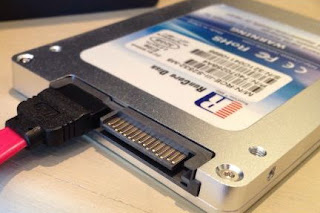 If you are using a partitioned disk and if you have performed operations such as, for example, switching Windows from hard disk to SSD, it may be that the partitions are not correctly aligned and, therefore, that the performance and speed of the disk or SSD are not optimal.
If you are using a partitioned disk and if you have performed operations such as, for example, switching Windows from hard disk to SSD, it may be that the partitions are not correctly aligned and, therefore, that the performance and speed of the disk or SSD are not optimal.Simply put and leaving technical notions aside, let’s say that a typical mechanical hard disk generally starts its first partition after 63 empty blocks (offset), while an SSD disk starts its first partition after 64 empty blocks.
The Windows installer knows how to handle this properly, so most people don’t have any alignment issues, whether they bought a computer from scratch or installed it on an SSD.
However, if we use a partitioned disk and we have moved an operating system or a large amount of data we can end up with misaligned partitions; this problem it degrades the performance and speed of your disk or SSD.
In the following guide we will show you How to align disk partitions to speed up disk loadsso as to make the most of the mechanical disk or solid state drive (both SSD and M.2 type) present on our computer.
READ ALSO -> Programs to optimize SSD (Samsung and others) and manage solid state drives
1) Check partition alignment
A quick way to check if your partitions have this problem and fix it quickly (if they are misaligned), involves using the program msinfo32; this is the internal tool that provides all the details about the computer you are using.
To recall it quickly, press WIN+R and we type msinfo32.exe; from the tool window we expand the section on the left side Components > Storage > Disks.
On the right side of the window we scroll down, locate all the entries “Partition start offset” and look at the number indicated; this value is present for each disk in the computer.
If the disk partitions are aligned, the number of Offset must be divisible by 4096. otherwise the partition is not aligned correctly.
For example if we have a partition with offset 1.048.576using the calculator, 1048576/4096 = 256Therefore the number is divisible and the sectors are aligned correctly; if the result of the division was a number with decimals and a decimal point, we are certain that the disk partitions are not aligned.
2) Align partitions correctly
In the event that the disk partitions are not aligned we can rely on some free alignment program, without having to use the manual procedure (which can also bring risks for the data present on the operating system).
To solve the alignment problem and recover your computer’s full speed using a simple free program called MiniTool Partition Wizard. From this program’s interface you just need to select the disk and right-click on it to find the option again Align and let the program do the work.
Alternatively we can align the partitions using the program AOMEI Partition Assistant Standardwhich has a very effective alignment system that can align any misaligned partition.
To proceed with this program all we have to do is open it (after installing it), right-click on the misaligned partition, select the menu Advanceclick on Align partitionset as value 4096 sectorspress on OK and finally up Proceedso as to obtain perfectly aligned partitions.
Conclusions
Partition alignment can lead to a good speed increase, particularly if we have many partitions present on a disk or on the SSD. The advice we can give you is: align all the partitions if we find even just one misaligned: only in this way will we be sure of speeding up access to every area of the disk.
To learn more we can read our ai guides best SSD drives for PC for faster loads and on differences between SSD and HDD hard disk.
Still on the topic of always fast discs we can read our guides on how to defragment and clean your disk, SSD or Hard Disk.
